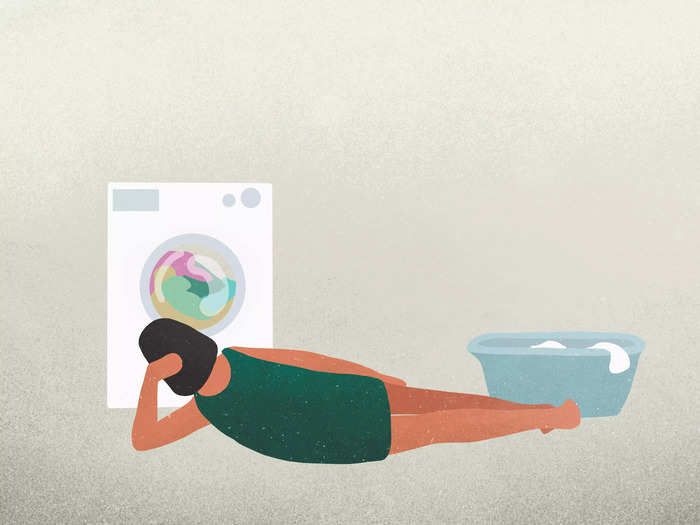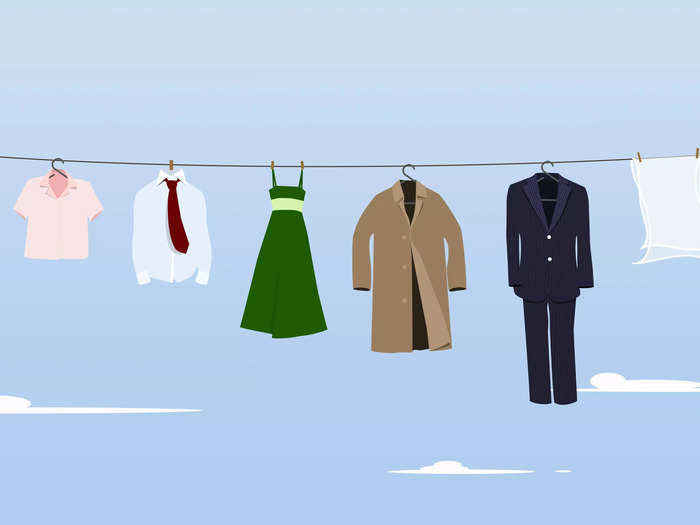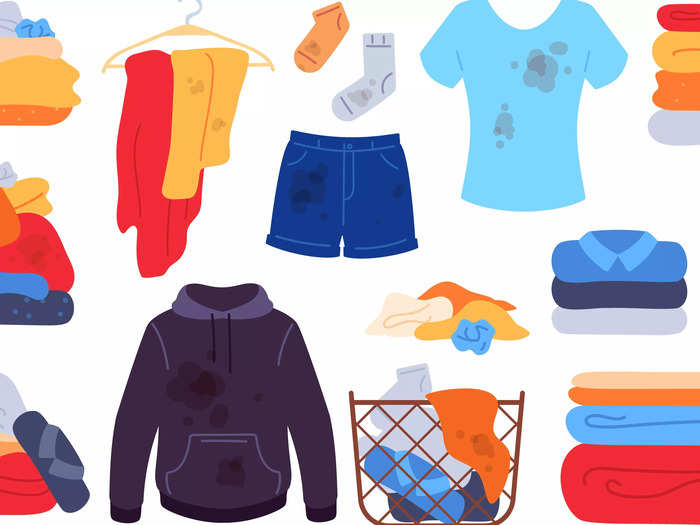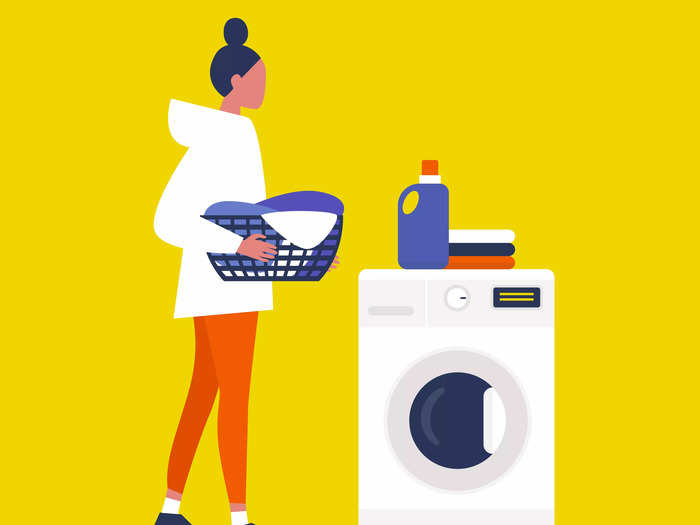The way you're laundering your clothes may be adding more microplastics into the environment.Maryna Terletska/Getty Images ; Alistair Berg/Getty Images
- Many clothes contain synthetic fabrics that release plastic into the water when laundered.
- How you do your laundry may be increasing your plastic output, which can harm marine life.
Microplastics smaller than a grain of rice have invaded every part of the world. They clog up the intestines of marine life, lodge in human lungs, and may be leeching toxic chemicals into our bodies.
And once they're there, they stay there forever, breaking into smaller pieces, but never disappearing entirely. One way microplastics invade the oceans is from laundry, some studies found.
That's right, the simple act of washing synthetic fabrics, like polyester, acrylic, and nylon releases microplastics.
People should stop buying synthetic fabrics altogether, and try to only buy natural fabrics, like cotton, linen, or bamboo, Sonali Diddi, a professor at Colorado State University who studies the environmental impact of clothing, told Insider. But that's a long-term solution, she said.
Luckily, there are things you can do in the immediate to reduce how much microplastics you may be sending into the environment. Diddi said if you change your habits slightly, "there's a pretty good chance that we'll be able to save the microfiber getting released into the waterways."
Here are four ways to launder your clothes more sustainably.
1. Take it easy on the wash settings.
Using more gentle settings on your washing machine can increase the longevity of your clothes. Malte Mueller/Getty Images
The first thing you should do is take a look at the care label on your garment, Diddi said.
It turns out that little sheet sewn into your garments doesn't exist just to irritate your skin — it contains information about the type of laundering your clothes can handle.
After that, Diddi recommends avoiding hot water on synthetic fabrics, which have tiny threads of plastic woven into them.
When heat hits the plastic, it breaks down — similar to how heating up a plastic takeout container can make it melt — releasing microplastics, in the process.
From the wash, microplastics leave the machine with the wastewater and may travel through the water system, eventually heading out to sea.
2. Avoid the dryer, hang your clothes instead.
Using a dryer adds more heat and friction to your clothes, which can release microplastics. Hanging dry avoids this. Ralf Hiemisch/Getty Images
Similar to hot water, a dryer exposes your clothes to heat which can deteriorate their quality and cause them to release more plastic.
Microplastics from the dryer are still likely to get into the environment, Diddi said. When the lint from the dryer is thrown away, microplastics often end up flitting into the air or water, Diddi explained.
Plus, by cutting out the dryer, you'll also be saving energy. An estimated 6% of Americans' home energy consumption comes from the dryer, according to CSU.
Diddi said a great swap is to hang or line dry your clothes. You can buy racks that fold up to accommodate small spaces or find a nice spot outside.
3. Wash less frequently and spot treat.
Learning when to wash your clothes versus when to just treat the stains on them is an important part of having more sustainable laundry practices. Tetiana Lazunova/Getty Images
A study of nearly 1,000 college students found that 50% of participants washed a piece of clothing after wearing it only once.
"That's the main reason why so much of microplastics end up in our waterways," Diddi said.
Every time a piece of synthetic clothing gets laundered, the woven strings of plastic might degrade a little more, she explained.
So instead of throwing all of your clothes into the hamper after every wear, you can use a sniff test and spot treat stains that pop up, Diddi said.
Of course, there are clothing items that need to be laundered more regularly, like underwear, for sanitary purposes.
But otherwise, spot treating is a much better option for synthetic fabrics, Diddi said.
4. Buy extra products, if you're interested.
There are products you can buy that might help catch microplastics from your laundry before they enter the watershed. nadia_bormotova/Getty Images
Finally, there are some companies that make products to better trap microplastics. They include filters that you attach to your washing machine, laundry bags, and laundry balls.
A 2018 study found that the external filter was the best at catching microplastics compared to other options like bags, but Diddi said overall the research is pretty sparse.
What she does know is that though these products don't eliminate the microplastic problem fully, "they decrease quite a bit of what they'll release in the waterways."
Especially if you separate your clothing based on fabric type, and use one of these products with synthetic clothing, she said.




